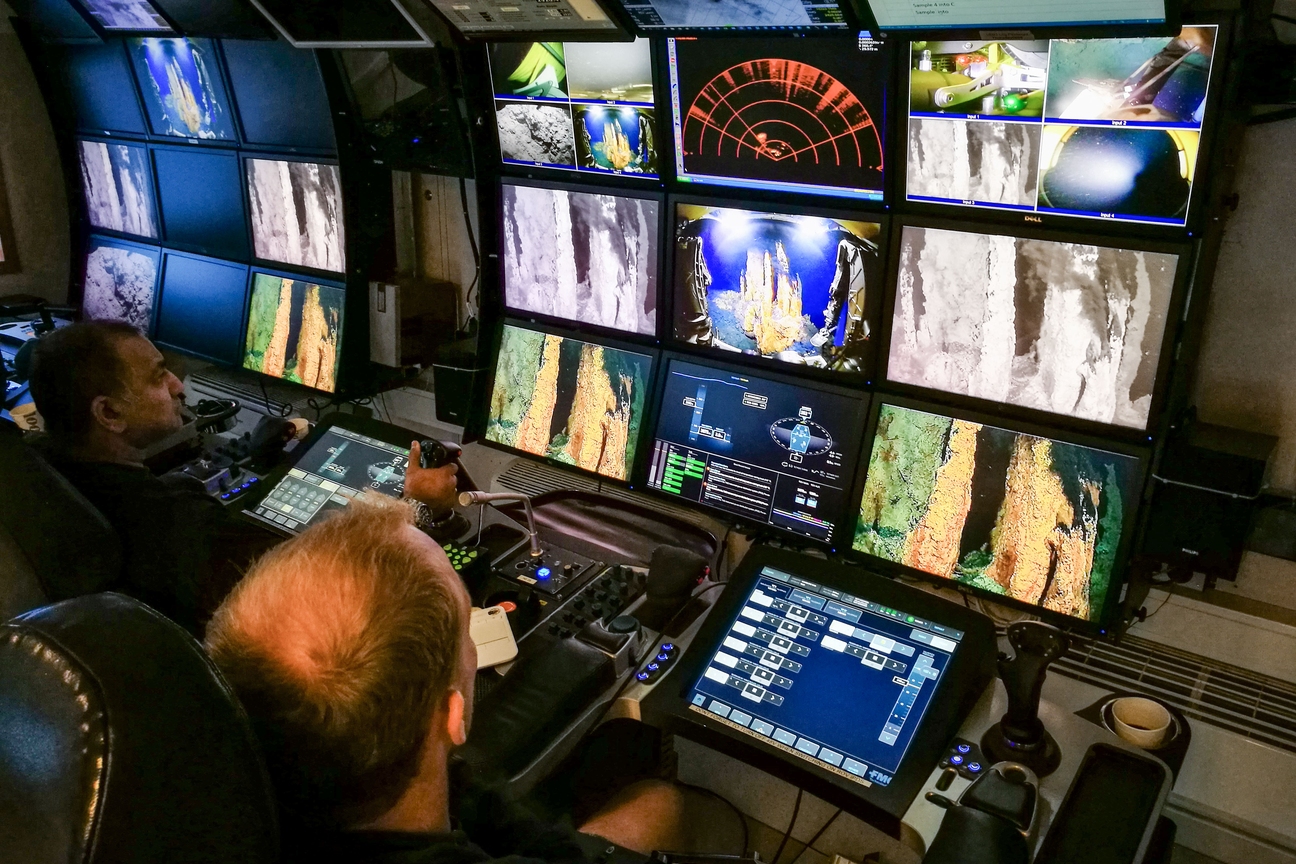
New discoveries in the Norwegian sea
During August 2018, Swire Seabed completed an extensive data acquisition campaign on behalf of the Norwegian Petroleum Directorate (NPD) to investigate the possible existence of sulphide mineral deposits on the seabed over the Mohn’s Ridge in the western part of the Norwegian Sea.
Mohn’s Ridge is a seafloor spreading ridge where the continental plates slide apart, and is also the distinction between Europe and America. The area of focus for the three-week expedition was the central rift valley of the Mohn’s Ridge, halfway between Norway and Greenland, where water depths range between 1200 and 3500 meters.
The Expedition
The expedition, funded by the Ministry of Petroleum and Energy, was conducted from Swire Seabed’s ROV support vessel, Seabed Worker, and a 3000 meter rated Kongsberg Hugin Autonomous Underwater Vehicle (AUV) was supplied and operated by our subcontractor Ocean Floor Geophysics to carry out mapping. The AUV was equipped with several sensors which gathered data including synthetic aperture sonar data (HiSAS), multi-beam bathymetry (MBES), sub-bottom profiler (SBP) and spontaneous potential data (SP). Following data evaluation, particular areas of interest were further examined and mineral samples were extracted using Swire Seabed’s Schilling HD work class Remotely Operated Vehicle (ROV).
The AUV mapped an area of 90km x 35km centrally located over the spreading ridge in long corridors, totalling 750 kilometres. The essential focus of the campaign was to locate non-active extinct volcano systems that now remain as mineral-rich piles of gravel on the seabed, which are quite hard to find. However, the survey successfully revealed large areas of sulphide minerals that were previously unknown, including many piles of such gravel and collapsed “Black Smokers,” one of which was a 26 meter high, non-active tower, in addition to some active systems.

Moment of Discovery
Five AUV missions were planned to collect geophysical data, and after four AUV missions, there were still no signs of the elusive ‘Black Smoker’ formations that the Norwegian Petroleum Directorate was hoping to discover. However, on the fifth AUV mission, Swire Seabed Geologists, together with the team from Ocean Floor Geophysics, noticed geophysical anomalies in the data collected.
Immediately, the ROV was launched from Seabed Worker to perform a visual survey of the anomalies. The interpretation of the data proved to be highly accurate as the photograph of the Seabed Worker ROV Online Room and the image recorded from the ROV camera showed the epic moment when the ROV surveyed a previously undiscovered ‘Black Smoker’ formation on Mohn’s Ridge. Further to the discovery of the ‘Black Smoker,’ the surrounding area demonstrated very promising examples of extinct ‘Black Smokers,’ which were of particular interest to NPD. The client representative on board marked the discovery as a ‘historic moment,’ which highlights how such a discovery adds further weight to the possibility that mineral extraction from areas of the extinct ‘Black Smoker’ could be a viable economy for the future of the Norwegian subsea industry.